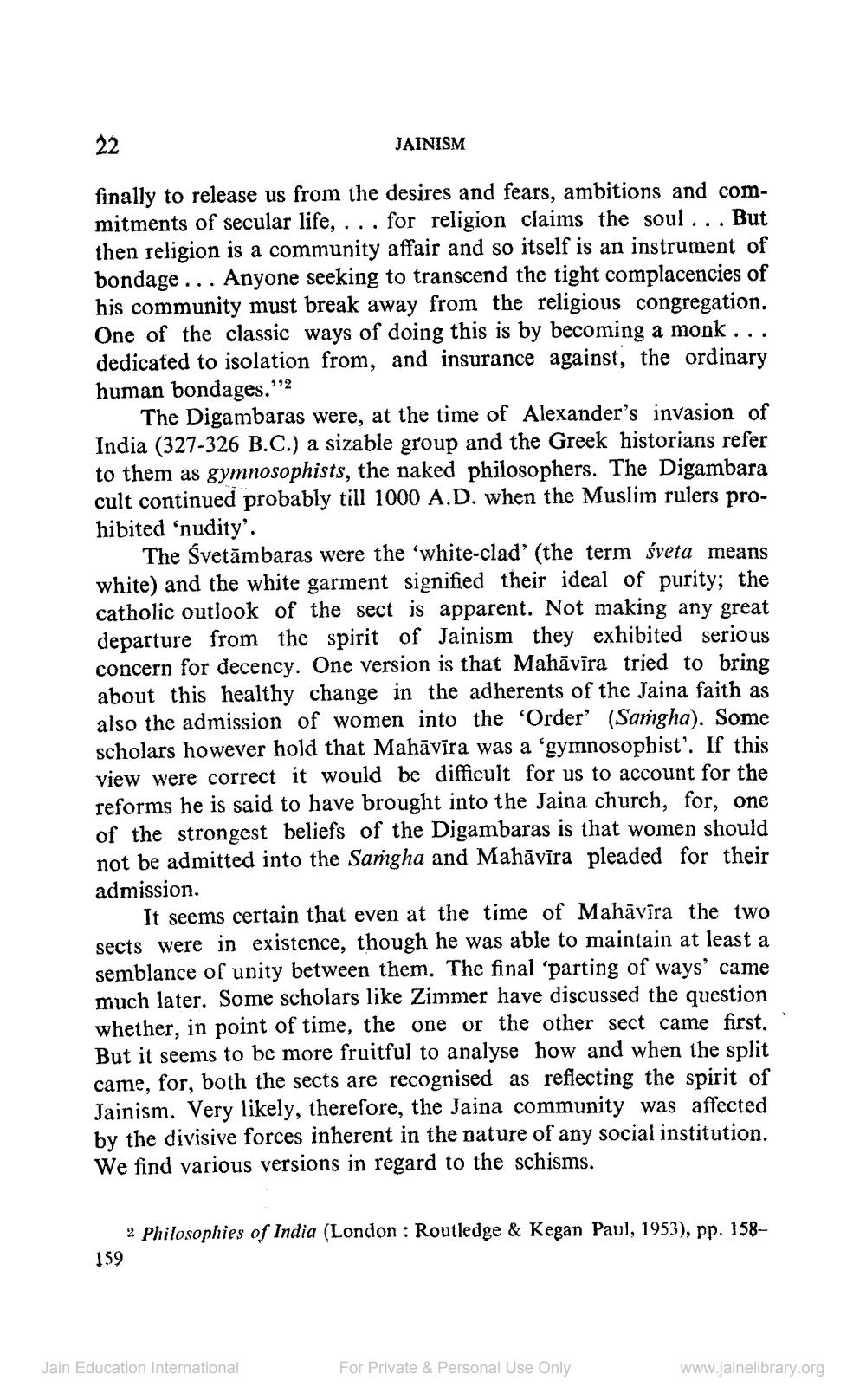________________
JAINISM
finally to release us from the desires and fears, ambitions and commitments of secular life, ... for religion claims the soul ... But then religion is a community affair and so itself is an instrument of bondage ... Anyone seeking to transcend the tight complacencies of his community must break away from the religious congregation. One of the classic ways of doing this is by becoming a monk... dedicated to isolation from, and insurance against, the ordinary human bondages.”
The Digambaras were, at the time of Alexander's invasion of India (327-326 B.C.) a sizable group and the Greek historians refer to them as gymnosophists, the naked philosophers. The Digambara cult continued probably till 1000 A.D. when the Muslim rulers prohibited 'nudity'.
The Svetămbaras were the 'white-clad' (the term sveta means white) and the white garment signified their ideal of purity; the catholic outlook of the sect is apparent. Not making any great departure from the spirit of Jainism they exhibited serious concern for decency. One version is that Mahāvīra tried to bring about this healthy change in the adherents of the Jaina faith as also the admission of women into the Order' (Saṁgha). Some scholars however hold that Mahāvīra was a 'gymnosophist'. If this view were correct it would be difficult for us to account for the reforms he is said to have brought into the Jaina church, for, one of the strongest beliefs of the Digambaras is that women should not be admitted into the Samgha and Mahāvīra pleaded for their admission.
It seems certain that even at the time of Mahāvīra the two sects were in existence, though he was able to maintain at least a semblance of unity between them. The final “parting of ways' came much later. Some scholars like Zimmer have discussed the question whether, in point of time, the one or the other sect came first. But it seems to be more fruitful to analyse how and when the split came, for, both the sects are recognised as reflecting the spirit of Jainism. Very likely, therefore, the Jaina community was affected by the divisive forces inherent in the nature of any social institution. We find various versions in regard to the schisms.
2 Philosophies of India (London : Routledge & Kegan Paul, 1953), pp. 158159
Jain Education International
For Private & Personal Use Only
www.jainelibrary.org




